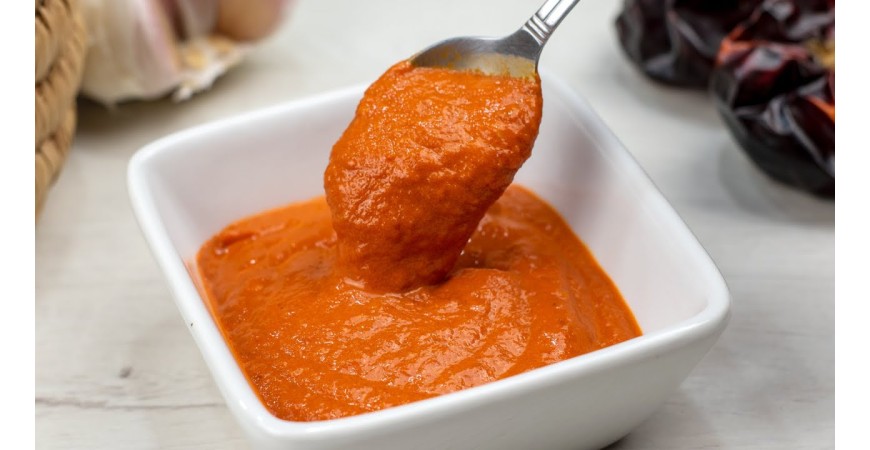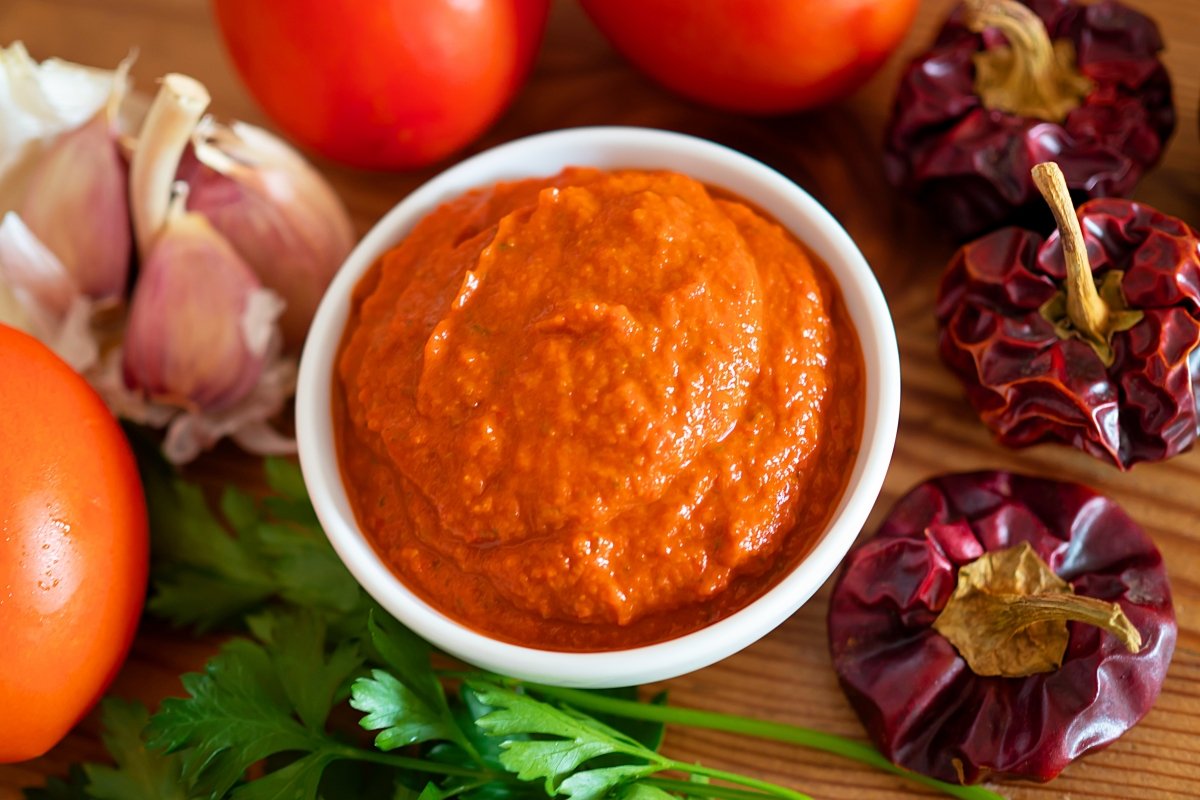How to prepare salmorreta for paella
Everyone has their own opinion on what the secret ingredient of paella is. Is it high-quality Valencian rice, top-notch ingredients, our experience, or the love we put into making this paella dish? Depending on who you ask, you might hear that the answer to this question is a good Alicante-style salmorreta.
In this blog post, we're going to tell you all about salmorreta and how to prepare this beloved Alicante-style sofrito.
What is salmorreta and what is it used for?
Salmorreta is considered the essential sofrito in almost all paellas and Alicante rice dishes. This sofrito, prepared ahead of the recipe, brings the characteristic color and flavor found in Levante-style rice dishes.
The origins of this recipe are not entirely certain, except for its geographical origin. Popular stories suggest that ship cooks used to prepare it in advance on land to use it later during long stays at sea.
The key ingredient in salmorreta is the dried ñora pepper, a small, round red pepper popularly known as "pimiento bola". Ñoras are sun-dried so they can later be used in a variety of recipes. In this case, we will show you how to prepare salmorreta for paella.
Ingredients to make a good salmorreta
The following quantities are suitable for preparing salmorreta for 4 people:
| 3 dried ñora peppers | 6 garlic cloves |
| 2 ripe tomatoes | Salt (to taste) |
| 120 ml of extra virgin olive oil | |
Step by step: how to make Alicante-style salmorreta for paella
1 - To prepare salmorreta, first clean the ñoras: remove the stem and seeds, then cut the flesh into small pieces. You can skip this step if you’re using powdered or ground ñora, as it will already be ready to use.
2 - Next, peel and halve the garlic cloves. Meanwhile, fill a pot with extra virgin olive oil and heat over medium heat. Once the garlic is peeled, fry it for a few minutes until golden brown.
Once golden, add the ñora flesh (preferably hydrated, though you can also use it dry) or ñora powder. If using powdered or ground ñora, stir for 30 seconds to let it infuse the oil.
3 - While the ñora is cooking, blend the tomatoes using a blender and add the tomato purée to the pot. Cook for 30–40 minutes on low heat, adding a pinch of salt to taste during cooking.
4 - After 30–40 minutes, if the tomato's water has evaporated, the sofrito is ready. All that's left is to blend it.
The best way is to transfer it to a blender jar or bowl and blend until smooth and without lumps. The final texture should resemble red mayonnaise.
Following these steps, you now have a real salmorreta in your hands, ready to prepare your paellas. We especially recommend using it in an arroz a banda.
Tips to enhance the flavor of your salmorreta
There are a few tricks to intensify the flavor of your salmorreta:
- Add a bunch of parsley while frying the ñora and garlic. Parsley is a fairly common ingredient in salmorreta preparation—some consider it optional, others essential.
- If you're using dried ñora, instead of hydrating it first, place it in a mortar with garlic and oil and pound until it becomes a paste. Then proceed as usual. According to some chefs, this method intensifies the flavor by better infusing the oil with the ñora and garlic. Just note this will give your salmorreta a darker color.
Frequently asked questions about how to make salmorreta
In this short section, we’ll answer some of the most common questions about making homemade salmorreta.
Can I store leftover salmorreta?
You can store salmorreta in the fridge for up to a week if you’re not using it immediately but plan to soon.
If not, a trick we recommend is to freeze the salmorreta in an ice cube tray. These salmorreta cubes not only help you preserve it for up to 2 months, but also allow you to portion it out depending on how much you need for your rice dishes—perfect for adjusting to the number of guests.
My salmorreta is darker than usual. Is that normal?
If your salmorreta doesn’t look exactly like the ones in cookbooks or online, don’t worry. Using more ñora or frying it dry can give it a darker hue.
We hope this post helped you learn how to make a top-notch salmorreta for all your Alicante-style rice recipes.




